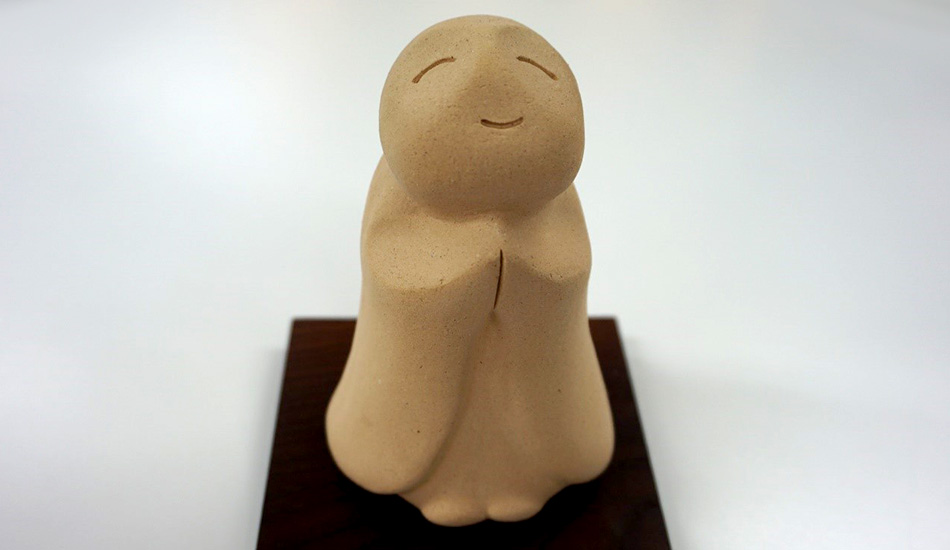The Changing Ways of Remembering Loved Ones
Published: December 11, 2018
With the changing demography in Japan, the traditional dark, heavy-looking butsudan (family Buddhist altar) is gradually giving way to new forms of commemorating deceased loved ones.
Memorial Style Omoi No Toki’s bright and airy showroom, on the second floor of a building overlooking Eitai-dori Avenue in Monzen-nakacho, displays a range of alternative ways to remember the departed. Ms. Kiyomi Higuchi, memorial service concierge, showed me around and explained what the firm offers to customers.
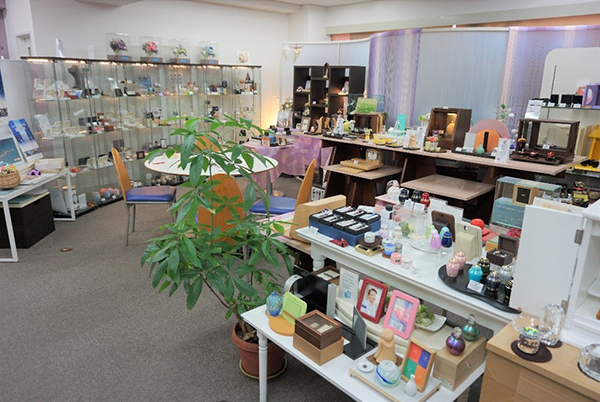
In place of the traditional butsudan Memorial Style Omoi No Toki has a selection of small, simple, elegant-looking pieces, which if it wasn’t for the picture of Buddha placed at the rear of the altar, could be mistaken for pieces of modern furniture.
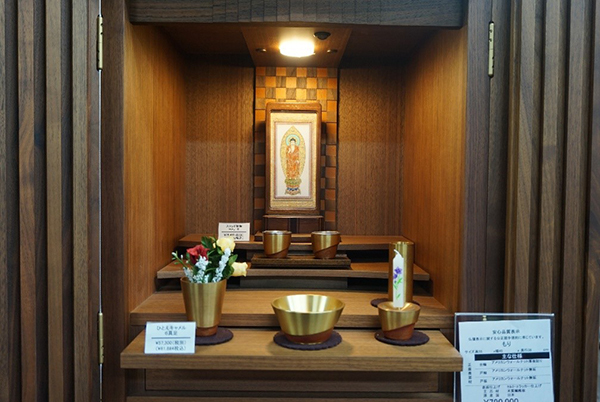
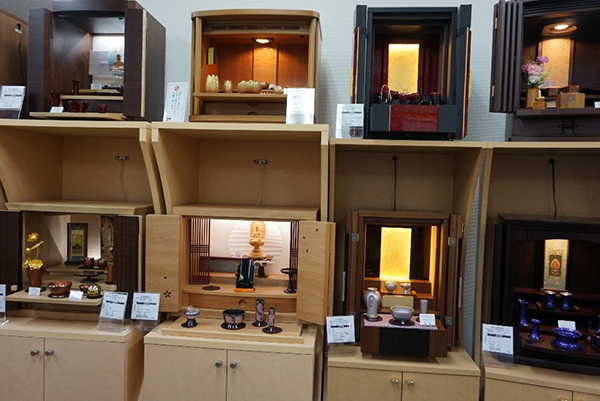
There was even a white butsudan, which looked for all the world like a dressing table-cum-chest of drawers.
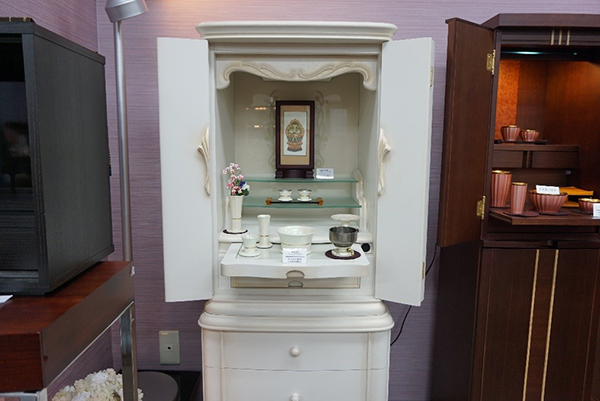
The company is always on the look-out for new ideas from manufacturers; for those persons who wish to remain close to the deceased loved one, a part of the cremated ashes can now be placed in a variety of containers.
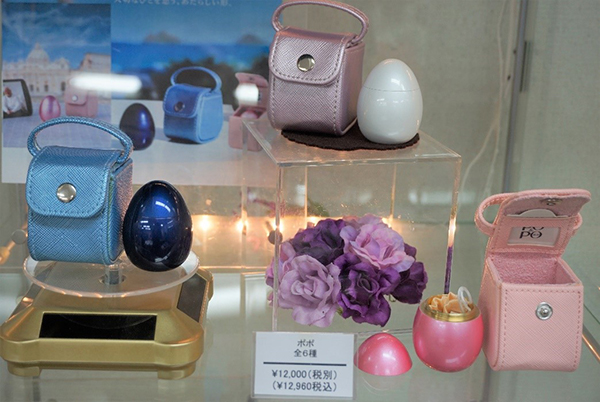
Ms. Higuchi showed me some display cabinets containing a selection of small elegant ceramic containers in which a person’s remains are held. These would not look out of place on a shelf or sideboard alongside other ornaments. There are also pendants featuring an opening in the back secured with a screw in which ashes can be placed.

Ms. Higuchi explained that these pendants and urns are popular with wives and daughters, but that not many men purchase them (could it be that men are less sensitive, perhaps?).
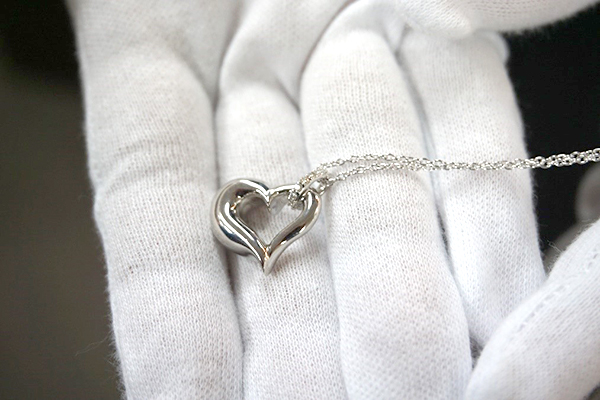
Also, what looks like a lipstick can be carried around in a handbag; when it is opened a transparent tube for holding ashes is revealed.
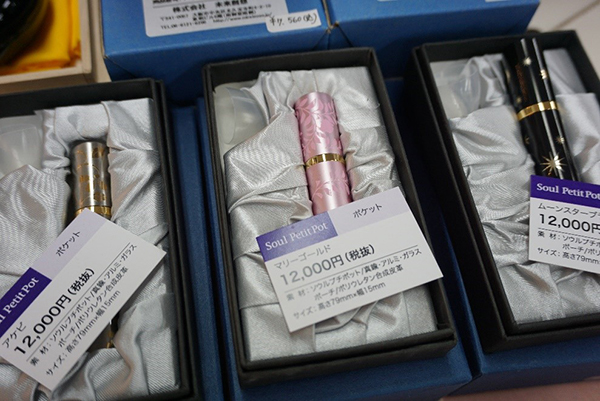
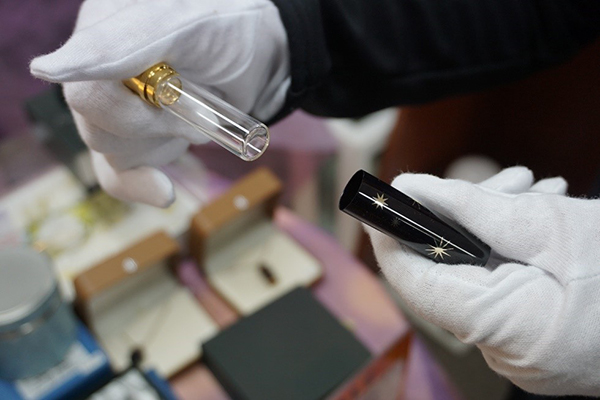
I particularly liked a charming pottery design of a Jizo sama, a small monk-like statue, in whose base ashes are placed.
With the reduction in the size of families and rural depopulation there are fewer close members around to regularly tend to family graves, which then fall into disrepair. An alternative is the kaiyo sankotsu – memorial placing of ashes in the sea (Ms. Higuchi emphasized the ashes are not scattered in the wind).
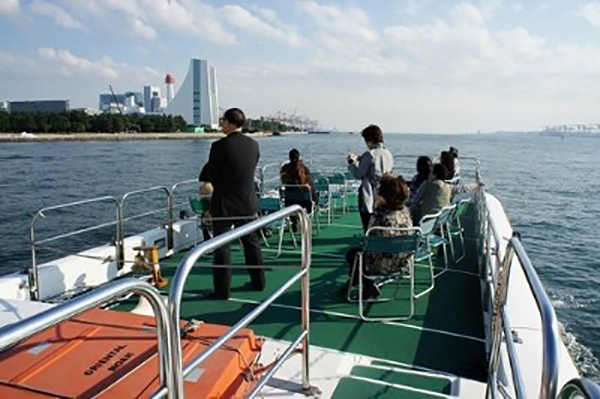
Ms. Higuchi said that 20 years ago this practice was extremely rare, but in recent years the practice is growing in popularity, particularly amongst 40 to 50-year-old couples with no children, or amongst single people. Memorial Style Omoi No Toki handles 350-400 ceremonies a year, with cruises taking place in Tokyo and Sagami bays and off the coast of Hayama. Prices depend on whether the ceremony is conducted solely or jointly with other families.
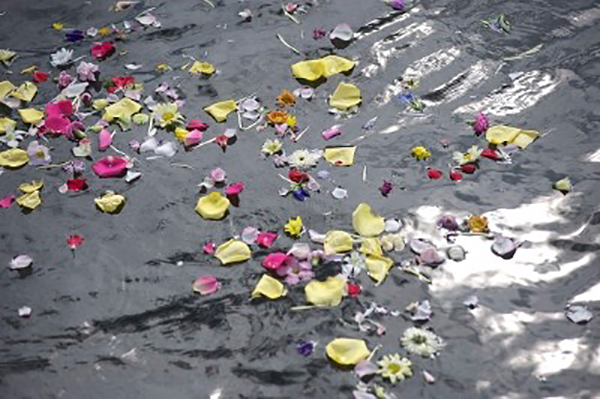
I was then shown an assortment of accessories which the showroom sells. I was particularly amused by the boxes of incense in the shape of well-known brands of chocolates and sweets.
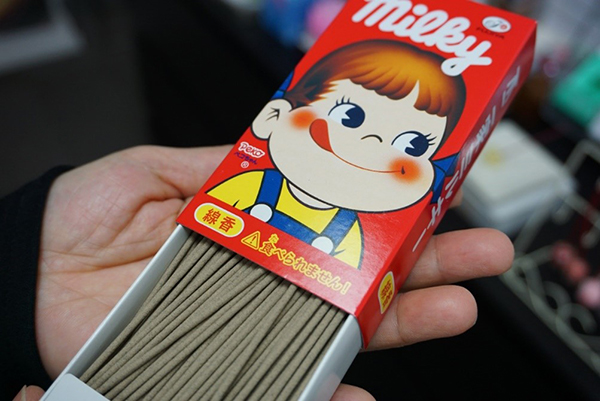
And along with the incense, in homage to the plastic food for which Kappabashi is famous, is a display of candles shaped like food items.
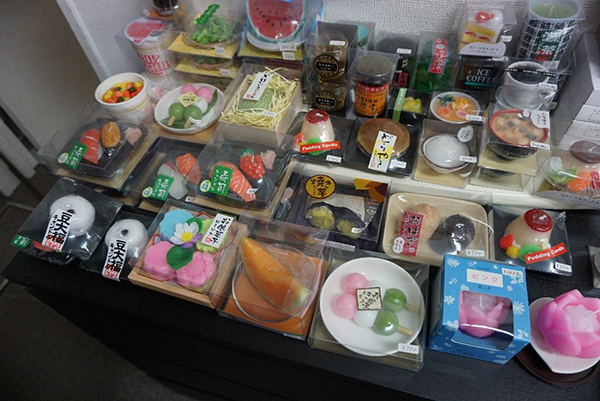
These are apparently very popular with customers; there was even one disguised as a pot of instant noodles.

Ms. Higuchi feels that remembering those we can no longer see and keeping them close to us is part of the Japanese psyche and culture, and is also important for Asian people in general.
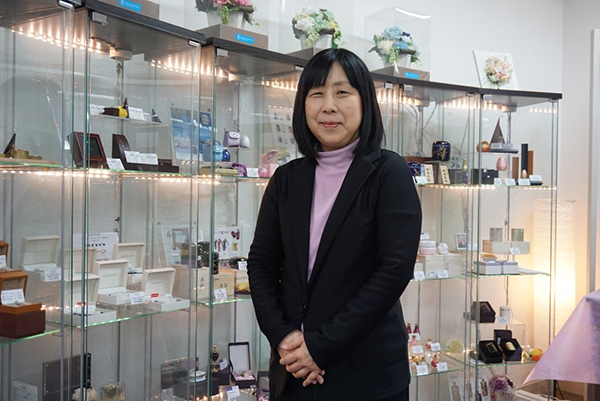
I came away from Memorial Style Omoi No Toki feeling that remembering loved ones had just become a little less sombre.
Story and photographs by Jeremy Hutchinson

